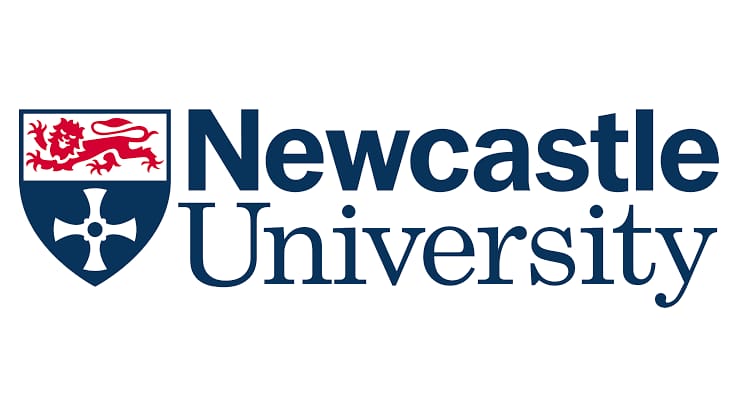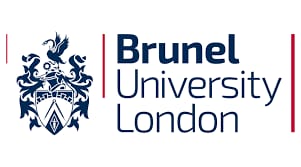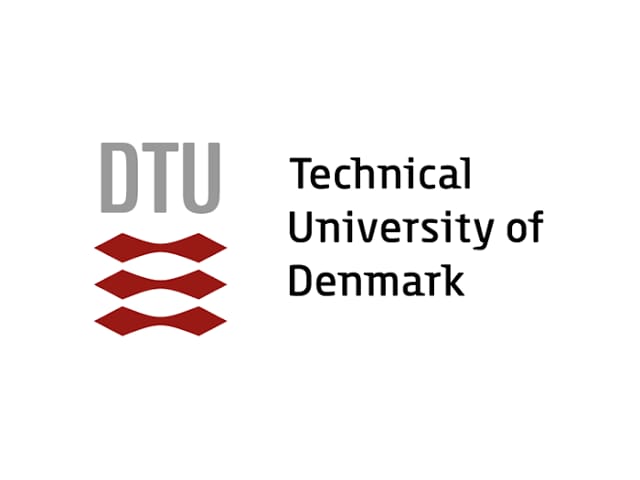INDIA  +91 9897 339 100
GERMANY
+91 9897 339 100
GERMANY  +49 176 8493 8262
AUSTRALIA
+49 176 8493 8262
AUSTRALIA  +67 402 992 135
USA
+67 402 992 135
USA  +1 157 5852 6511
UK
+1 157 5852 6511
UK  +45 157 5852 6511
EOROPE
+45 157 5852 6511
EOROPE  +49 157 5852 6511
+49 157 5852 6511
Migrate to Canada
Migrate to Canada
Canada has built a reputation over the last half century for welcoming immigrants and valuing multiculturalism. Foreign-born people make up almost one-quarter of Canada’s population—the largest share in more than 150 years and one of the highest ratios for industrialized Western nations. Immigrants have helped the country counter aging demographics and fuel economic growth, though some Canadians have expressed concern about the increasing strain on housing and social services.
Canada became an even more attractive destination for immigrants within the last decade after policies enacted under U.S. President Donald Trump severely restricted access to the United States. While President Joe Biden has largely reversed those policies, his administration has worked with the Canadian government to limit the number of refugees and asylum seekers who cross over the northern U.S. border and into Canada. Meanwhile, Canada is also experiencing a prolonged labor shortage exacerbated by a dearth of skilled workers. Its immigration system faces an array of other challenges as well, including a surge in asylum claims, rising deportations, and labor abuses against temporary-visa holders.
What role has immigration played in Canada historically?
As in the United States, immigration has significantly shaped Canadian society and culture. Following its independence from the United Kingdom in 1867, Canada used immigration to help develop vast tracts of land. Government-sponsored information campaigns and recruiters encouraged immigrants of that era to settle in rural, frontier areas.
But not all immigrants were welcome. Nineteenth- and early twentieth-century policies prevented or discouraged immigration by select groups, including certain people of non-European and non-Christian backgrounds, as well as the poor, ill, and disabled. Canada’s immigration calculus changed during the postwar period as refugees and others fled Europe, public attitudes toward outsiders softened, and economic growth demanded a larger workforce. Cold War tensions also influenced Canadian policy, with preferences established for anti-Communist and Soviet-bloc immigrants.
Legislation in the 1960s and 1970s laid the groundwork for the immigration regime Canada has today, which embraces multiculturalism. In 1967, Ottawa introduced a points-based system for evaluating applicants, after which Canada saw a jump in immigration from Africa, Asia, and Latin America and the Caribbean. A 1971 policy first articulated the government’s support for cultural diversity, and legislation in 1976 explicitly codified Canada’s commitment to refugees, mandating that federal and provincial officials develop immigration targets together. It also cast immigration as a tool for meeting the country’s cultural, economic, and social objectives.
Immigration has long played a vital role in Canada’s economy, providing a relatively young stream of workers. Immigrants have become increasingly important as the native-born labor force ages and the fertility rate remains low, at roughly 1.3 births per woman, far below the global average of 2.4. However, Canada continues to suffer a significant shortage of skilled labor across all industries, though the issue had eased slightly as of mid-2023.
Who immigrates to Canada, and where do they settle?
Canada granted more than 437,000 foreigners permanent residency in 2022. (Preliminary data for 2023 shows that this figure surpassed 471,000, the most new foreigners ever accepted in a single year.) The greatest share of new Canadian permanent residents in 2022 came from India, followed by China, Afghanistan, Nigeria, and the Philippines. The current government plans to continue steadily increasing immigration levels, with the goal of accepting five hundred thousand new permanent residents into the country each year by 2025, after which Ottawa would aim to stabilize immigration targets.
Ontario has long been the leading destination for immigrants. Between 2016 and 2021, the province welcomed 44 percent of all new permanent residents, the majority of whom settled in and around Toronto, Canada’s largest city.
How does the Canadian immigration process work?
Economic. Canada’s economic immigration process has been touted as a model for other countries. The federal government offers several economic programs, the majority of which are managed through a point-management system known as Express Entry. The system gives preference to younger candidates with job offers and high levels of education, experience, and language proficiency (i.e., English and French). Approximately every two weeks, the government invites top-ranking individuals to apply for permanent residency, an expensive and comprehensive process that includes language testing and biometric screening. Most applicants receive a decision within six months. Due to changes made during the pandemic, the Express Entry program now accepts migrants who receive a minimum score of sixty-seven, down from the previous record low of seventy-five.
Other immigration pathways include various regional economic programs, including the Provincial Nominee Program, which accounted for roughly 35 percent of economic admissions in 2022. Through this process—as well as similar, Quebec-specific programs—people apply to individual provinces, which choose candidates who fill their economic needs. The federal government must still approve provincially supported immigrants, but it grants most permanent residency.
Family. This class of immigrants includes spouses, partners, and children joining family members already living in Canada. Under this program, legal permanent residents apply to sponsor their relatives, who must also apply for permanent residency. Canada recognizes same-sex couples for this immigration category, even if they are not legally married, although a couple must provide proof of a long-standing relationship. The government has sometimes implemented priority processing for family reunification applications that sponsor nationals of certain conflict-afflicted countries, such as Afghanistan and Ukraine.
Refugees and protected persons. In 2022, Canada resettled the most refugees of any country for the fourth consecutive year. (It overtook the United States in 2018.) The government welcomed more than 47,000 refugees in 2022, mostly from Africa and the Middle East—a 133 percent increase from the previous year, when pandemic-related restrictions continued to slow resettlement processing.
There are two main types of resettled refugees: government-assisted and privately sponsored. Government-assisted refugees are referred by the UN refugee agency based on their location and vulnerability, and receive government assistance during their transition. Privately sponsored refugees, who accounted for close to half [PDF] of resettled refugees in 2022, are brought to Canada by government-approved citizens and organizations that assume legal and financial responsibility for them. Refugees cannot apply directly to be resettled in Canada. All refugees undergo rigorous screening by Canadian officials and generally have permanent resident status when they arrive.
Humanitarian and other. Canada grants permanent residency to a small number of people for other reasons. These include broadly defined humanitarian and compassionate grounds, such as specific hardships that applicants would face if they were to return to their home countries. Individuals must receive permission to apply. Officials consider various factors when adjudicating cases, such as applicants’ connections to Canada and the circumstances they face if they are not admitted.
How do immigrants adjust to life in Canada?
Canada goes to comparatively great lengths to help immigrants assimilate by providing them with orientation programs, skills training, social services, and pathways to citizenship. In recent years, roughly three-quarters [PDF] of the federal immigration agency’s budget has gone toward settlement programs. This level of support has helped make Canada one of the most sought-after destinations for immigrants, with generally high rates of immigrant satisfaction and naturalization. Immigrants have risen to prominent positions within Canadian society, including the prime minister’s cabinet.
Still, immigrants continue to lag behind native-born Canadians on certain economic indicators, although the disparities have diminished over time and generations. Many struggle to find employment that matches their skills and qualifications. “Immigrants do have to work incredibly hard to find their footing in the Canadian economy, especially those immigrants who lack linguistic ability,” says Daniel Hiebert, a professor at the University of British Columbia who has advised Canadian officials on immigration.
What are Canada’s temporary foreign worker programs?
Canada has several temporary foreign worker programs intended to address industry-specific needs and support the country’s economic and cultural advancement. Officials granted a total of 604,382 new temporary work permits to foreigners in 2022; these include agricultural laborers, in-home caregivers, and highly skilled professionals. In 2024, the government announced that, for the first time, it will begin limiting the number of temporary foreign workers accepted into the country.
The system is complex, but temporary workers generally come to Canada through one of two pathways. The International Mobility Program provides work visas to foreigners that fit broad criteria. Employers can hire them without considering Canadian applicants, though some permit holders have restrictions on where and what jobs they can work. Meanwhile, the Temporary Foreign Worker Program allows businesses that cannot find employees domestically to recruit internationally. All foreign workers receive labor protections, and officials inspect their workplaces to mitigate mistreatment. Still, abuse and corruption are common in Canada’s temporary worker system, facilitated by insufficient government oversight and work permits that tie immigrants to a single employer; and these problems worsened amid the COVID-19 pandemic. How long foreign workers can remain in Canada varies. While some skilled temporary workers eventually gain permanent residency, low-wage laborers generally cannot.
How much of a challenge is illegal immigration in Canada?
Canada’s geography—bordered by three oceans and the United States, which is itself a magnet for immigrants—has helped Ottawa limit flows of undocumented people. Its highly regulated immigration system, including some of the world’s strictest visitor-visa requirements, is designed to further curb this phenomenon. Estimates vary, but academic sources say there are between three hundred thousand and six hundred thousand undocumented people living in Canada. In line with its ambitious immigration targets, the government announced in 2023 that it plans to offer certain undocumented workers a pathway to citizenship.
In 2023, Canadian polling firm Leger found that more than half of all Canadians surveyed felt the government’s target of five hundred thousand immigrants a year is too high, while 75 percent of respondents expressed concern that more immigration will result in excess demand for housing and social services. Nonetheless, several Canadian cities have sanctuary-city and “access without fear” policies that limit police cooperation with immigration authorities and guarantee undocumented people public services. Officials also rarely enforce a law banning Canadian companies from hiring undocumented workers.
Acharyakulam Institute
At Acharyakulam Institute, we pride ourselves on offering a diverse range of language courses and trending programs designed to empower our students with valuable skills and knowledge. Explore our offerings and discover why Acharyakulam is the ideal choice for your educational journey.
Read More
Testimonial
What People Say About Study Aboard

Priya Sharma
Student
"Thanks to Acharyakulam, I was able to fulfill my dream of studying abroad. Their personalized guidance and support made the entire process smooth and hassle-free. I am now pursuing my master's degree in the United States, and I couldn't be happier."

Dr. Rajesh Gupta
Professional
"I approached Acharyakulam for assistance with my immigration process, and I am grateful for their expertise and dedication. They guided me through the entire process, from visa applications to residency permits, with professionalism and efficiency. Thanks to their support, I am now settled in Australia with my family."

Neha Singh
Travel Enthusiast
"My experience with Acharyakulam's tour and travel services was exceptional. Their team curated a customized itinerary that perfectly suited my preferences and budget. From booking flights to arranging accommodations, they took care of every detail, ensuring a memorable and stress-free travel experience."

Ankit Mehta
Adventure Seeker
"I recently embarked on a thrilling adventure trip organized by Acharyakulam, and it exceeded all my expectations. From hiking through scenic trails to exploring hidden gems off the beaten path, every moment was unforgettable. I highly recommend their tour packages to fellow adventure enthusiasts."
Acharyakülam Institute & Study Abroad ✈️
A Unit of Rahtan Group
#Near Cafe Coffee Day, Civil Line, Roorkee-247667, Haridwar, INDIA
Branch:
. Roorkee, Haridwar, Jaipur in INDIA
. Berlin, Frankfurt in GERMANY
. Perth, Melbourne in AUSTRALIA
. Dubai in UAE



















